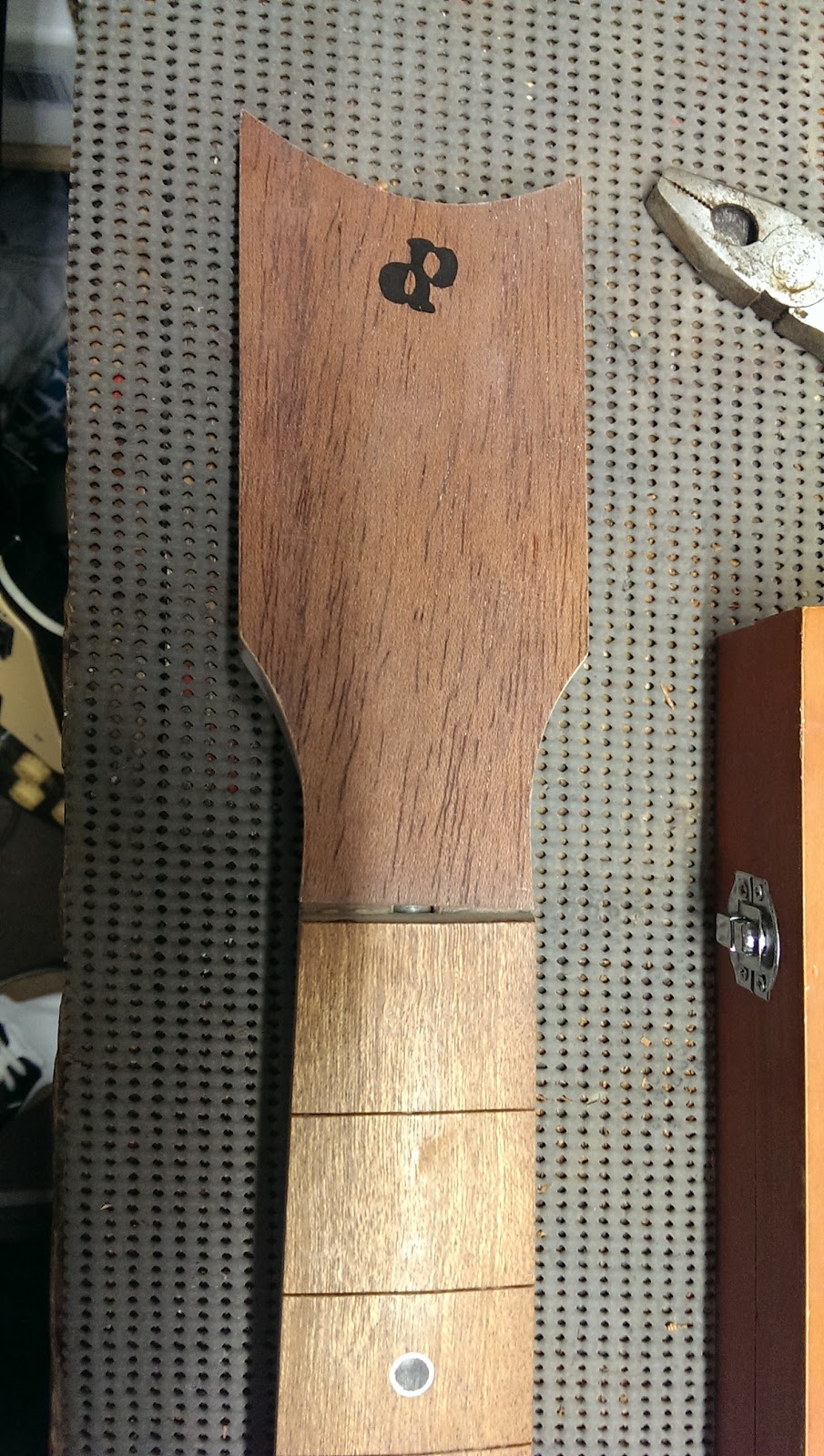Over the past couple of days I have continued work on the Les Paul neck concentrating on installing the two way truss rod and installing the fret markers. As with the Telecaster neck I am also working on at the moment, I am going to fit black epoxy dots with a brass ring round them. It both looks great and gives a nice clean edge to the dots.
I glued the mahogany fret board to the neck and left it to set overnight. As usual I used most of my clamps in an effort to ensure a nice snug fit all round.
Once the glue had set I removed the clamps and trimmed the overhang with my plane leaving the fret board flush with the neck. Next I marked out the positions of the fret markers and carefully drilled the holes paying particular attention to the edges of the hole to ensure there is no chipping leaving an unsightly and uneven circle.
Next I cut small sections from a hollow brass rod (I inserted a dowel into the rod whilst cutting it to ensure it did not deform). I then tapped these into the holes adding a little superglue to the bottom of each hole for adherence.
Once the brass rods were glued in place and set I carefully filed them down a little, just enough to be about 2mm proud of the fret board. I cleaned the inside of each of the rings removing any burrs and metal fragments. I then mixed some black epoxy putty and pressed it into each of the brass rings.
Leaving this overnight to set I masked the fingerboard the next day so I would not damage it whilst filing the majority of the excess brass and epoxy away. I used a file to remove the majority of the excess material.
Finally I set up my trusty neck profile jig and continued removing the rest of the excess with the same profile block I used to shape the fingerboard. I started with 60 grit abrasive sand paper, then 80 grit and so on gradually using finer grades until everything was flush.
Once this was finished and everything was smooth and flush I started adding coats of sander sealer to the fingerboard. Mahogany is not commonly used on the fret board because it is porous and soft so I need to apply some sort of finish before installing the frets. There is also some question as to how well mahogany holds the frets but I will use superglue to ensure the frets do not pull out.
After some discussion with fellow luthiers I decided to finish the fret board with Tru-Oil rather than lacquer as I had originally intended. I have been adding coats and then sanding them back with wire wool over the past couple of days and will continue to do this until I have a finish I am happy with and all the pores are filled. I will then drill and fill for the side markers using the same epoxy and install the frets before shaping and carving the back of the neck.





























